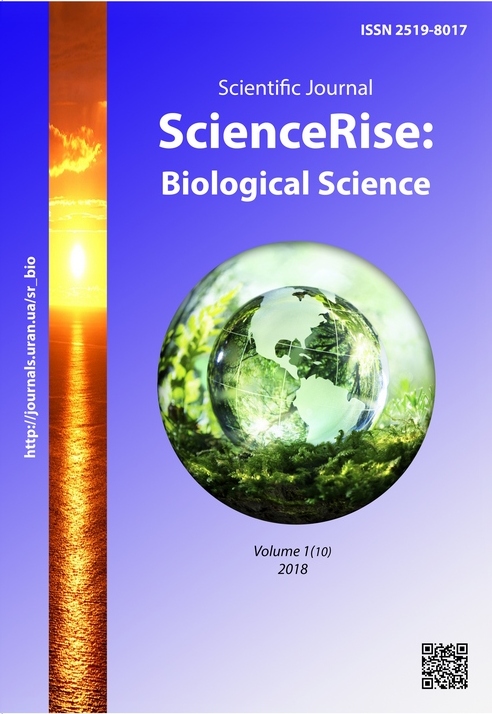Dynamics of flora in the old-field ecosystem Ukrainian Polissya
DOI:
https://doi.org/10.15587/2519-8025.2018.121809Keywords:
flora, dynamics, transitions, ecosystems, indicator, disturbance, Ukrainian Polissya, autogenic successionAbstract
Flora is an important component of ecosystems. Representatives of the old-field flora affect the direction and pace of ecosystem development. The old-field ecosystem is a unique place for research of its dynamics. Secondary autogenic succession occurs in the old fields of ecosystems. Here one can observe the influence of external factors on the course of succession, such as biotic, abiotic and anthropogenic factors. Therefore, the study of the old-fields flora is an important stage for the development of methods for forecasting the dynamics of ecosystems. Material of research can be used for phytoindication determination of ecosystem disturbances. The bioindicators the ratio between the different families of plants may be. However, the best indicator is the use of standard synphytoindication techniques. These data will allow building forecasts for the development of ecosystems in different environmental conditions
References
- Burlaka, N. I. (2012). World experience of land resources appointments. Economic Sciences. Series: Accounting and Finance, 9 (1), 142–149.
- Hunger Report. Fragile Environments, Resilient Communities (2017). Available at: http://hungerreport.org/2017/wp-content/uploads/2016/11/2017-Hunger-Report-Executive-Summary.pdf
- Didukh, Ya. P., Pliuta, P. H. (1994). The phytoindication ecological factors. Kyiv: Naukova dumka, 280.
- Yakubenko, B. Ye., Hryhora, I. M., Skuriatin, Yu. M., Malashta, N. D. (2004). Theoretical basis for the formation of synanthropic phytocoenoses and the coenotic role of weed. Visnyk DDAU, 1, 15–19.
- Khomiak, I. V. (2012). Phytoindicative characteristic of plant communities transformation of renewable natural vegetation of the Central Polessya. Optimization and Protection of Ecosystems, 5 (24), 58–65.
- Hryhora, I. M., Solomakha, V. A. (2000). Basic of phytocenology. Kyiv: Phytosociocentr, 239.
- Didukh, Ya. P., Khomiak, I. V. (2007). Estimation of potential of ecotypes depending on a degree their hemeroby (for example of the Slovechansko-Ovruchsky ridge). Ukrainian botanical journal, 64 (1), 62–77.
- Dobrochaeva, D. N., Kotov, M. I., Prokudim, Yu. N. et. al. (1987). The determinant of higher plants of Ukraine. Kyiv: Naukova dumka, 548.
- Solomakha, V. A. (2008). Syntaxonomy of vegetation of Ukraine. Third approximation. Kyiv: Phytosociocentre Press, 296.
- Pashkevych, N. A., Havrylov, S. O. (2012). Transformation of Vegetation Coverof Abandoned Fields in Shatsky National Natural Park. Nature of Western Polesie and surrounding areas, 9, 139–142.
- Yakubenko, B. Ye., Churilov, A. M., Tertyshnyi, A. P., Yarmolenko, A. K. (2014). The synantropization analysis of flora of the longfallow lands in the ForestSteppe of the Kyiev region. Biological Resources and Nature Management, 6 (3-4), 5–10.
Downloads
Published
How to Cite
Issue
Section
License
Copyright (c) 2018 Ivan Khomiak

This work is licensed under a Creative Commons Attribution 4.0 International License.
Our journal abides by the Creative Commons CC BY copyright rights and permissions for open access journals.
Authors, who are published in this journal, agree to the following conditions:
1. The authors reserve the right to authorship of the work and pass the first publication right of this work to the journal under the terms of a Creative Commons CC BY, which allows others to freely distribute the published research with the obligatory reference to the authors of the original work and the first publication of the work in this journal.
2. The authors have the right to conclude separate supplement agreements that relate to non-exclusive work distribution in the form in which it has been published by the journal (for example, to upload the work to the online storage of the journal or publish it as part of a monograph), provided that the reference to the first publication of the work in this journal is included.









